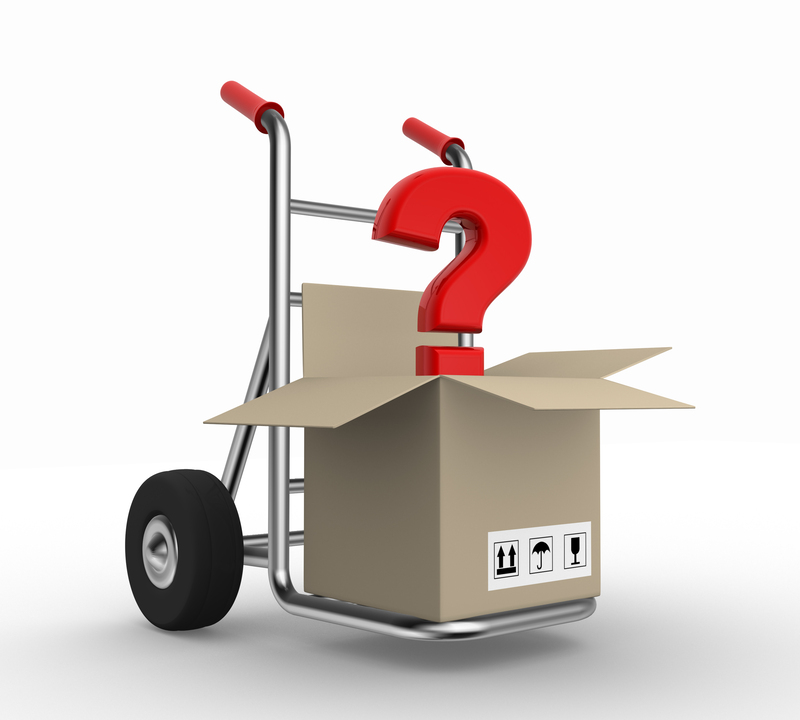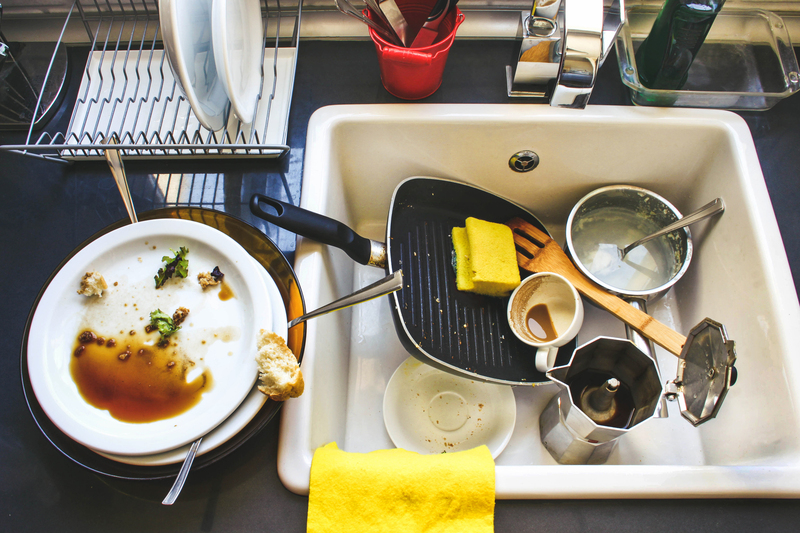Tips for Keeping a Freezer Safe When Unplugged
Posted on 21/05/2025
Tips for Keeping a Freezer Safe When Unplugged
Are you planning to unplug your freezer for an extended period, due to moving, cleaning, or energy-saving concerns? If so, you'll want to ensure your freezer remains safe, hygienic, and undamaged during the time it's not in use. Freezers hold a vital role in kitchen storage, and improper handling when they're unplugged can lead to bad odors, mold growth, component damage, or pest issues. In this comprehensive guide, you'll discover essential tips for keeping a freezer safe when unplugged, ensuring it stays in optimal condition for future use.
Why Is It Important to Keep a Freezer Safe When Unplugged?
Unplugging your freezer is sometimes unavoidable, whether you need to clean, defrost, relocate, or store it during an extended time away from home. However, a poorly maintained unplugged freezer can quickly turn into a source of unpleasant smells, mold infestation, or mechanical problems. Potential hazards include:
- Mold and mildew buildup due to trapped moisture and warmth inside the unplugged freezer.
- Odor formation caused by food residue and stagnant air.
- Infestation by pests or insects attracted by leftover crumbs or food particles.
- Interior damage or rust, impacting long-term performance.
- Component degradation if not stored and maintained correctly.
Following the right unplugged freezer maintenance tips will not only preserve your appliance but also save money and hassle when it's time to use it again.

1. Properly Empty and Clean the Freezer
Remove All Contents
The first and most important step is to empty your freezer completely. Leaving food or ice in an unplugged appliance can cause spoilage, leaks, and bad smells. Make sure you:
- Remove every food item and ice tray from the freezer compartment.
- Dispose of any expired, spoiled, or perishable foods immediately.
- Transfer salvageable items to another freezer or cooler with ice packs.
Defrost the Freezer
After unplugging, allow any ice buildup or frost to melt. Speed up defrosting by leaving the door open, or, if safe for your appliance, placing bowls of hot water inside to gently warm and loosen stubborn ice.
- Be sure to place towels or a shallow tray at the base to catch melting water and prevent spills.
- Never use sharp objects to chip away at ice as this could damage the freezer's lining.
Deep Clean and Disinfect
Once the compartment is fully defrosted, clean all interior surfaces using a mixture of mild dish soap and warm water, or a solution of vinegar and water for a more natural clean.
- Wipe down shelves, bins, and door seals carefully.
- For lingering odors, use a paste of baking soda and water, or leave an open box of baking soda in the freezer for a few hours.
- Rinse with clean water and dry thoroughly with a clean towel.
2. Fully Dry the Freezer Before Closing
Moisture is your worst enemy when storing a freezer unplugged. Any residual dampness can foster mold, mildew, or rust. Therefore, make sure every part of the freezer--including gaskets, corners, trays, and vents--is completely dry.
- Air-dry by keeping the door open for several hours, or use a portable fan for faster results.
- Wipe down with dry microfiber cloths to remove every drop of moisture.
3. Leave the Freezer Door/Open Slightly Ajar
Never seal the door of an unplugged freezer shut. Trapped moisture and lack of airflow will almost certainly lead to musty odors, mildew, and mold growth. The best practice is:
- Place a rolled-up towel or wedge object in the door to keep it cracked open about an inch (2-3 cm).
- Alternatively, use the freezer's built-in latch or prop if available.
- If your freezer has removable shelves or bins, store them slightly pulled out to enhance air movement.
This simple step helps ventilate the compartment, discouraging bacterial and fungal growth during storage.
4. Store Freezer in a Well-Ventilated, Dry Location
Where you choose to store your unplugged freezer matters just as much as how you prepare it. For maximum safety:
- Position the freezer in a cool, dry area--avoid humid basements, bathrooms, or unheated outdoor sheds.
- If storing in a garage or storage unit, use pallets or blocks to keep the appliance off the ground, preventing moisture absorption and rust.
- Keep away from direct sunlight and heat sources to protect both exterior and internal components from degradation.
- If covering the freezer for dust protection, use breathable material such as cotton sheets, not plastic or airtight materials, which trap humidity inside.
5. Prevent Pests and Insects From Entering
Vacuum around and beneath the freezer to eliminate food crumbs or debris that may attract insects or rodents. Additional tips:
- Check and plug entry points around electrical wiring or drain hoses at the back or underside of the freezer.
- Place odor-absorbing agents like activated charcoal or baking soda inside, which also help deter pests.
- For long-term storage in pest-prone environments, encircle the feet or base with insect barrier powder or safe traps.
6. Protect the Freezer's Exterior and Components
Safeguard the outside of your freezer to ensure it's ready for use when you plug it back in.
- Clean exterior surfaces with a soft cloth and mild cleanser--do not use abrasive pads or harsh chemicals.
- Dust or vacuum cooling coils and vents to inhibit dirt buildup.
- Bundle and tie the electrical cord securely to avoid trip hazards or wire damage; never tuck it under the base.
- If your freezer has a water or ice dispenser, drain hoses or water lines completely and store them separately to deter mold growth.
7. Perform Regular Checks During Storage
If your unplugged freezer is in storage for several months, periodic inspections are wise to prevent surprises or damage:
- Open the door to check for odors, signs of pests, or mildew.
- Re-wipe interior surfaces if any moisture develops, and replace odor absorbers as needed.
- Keep a maintenance log to remind yourself of these checks every few weeks, especially in humid seasons.
8. Preparing to Use the Freezer Again
When you're ready to plug your freezer in again, these tips ensure optimal restart:
- Remove all odor absorbers and door wedges.
- Wipe interior with a clean, damp cloth to refresh surfaces and eliminate any dust.
- Let the freezer run empty for a few hours to reach operating temperature before returning food.
- Test the seal, components, and controls to confirm everything works efficiently and safely.
Starting with a clean, dry, and fresh-smelling appliance extends its lifespan and protects your upcoming food storage.

Frequently Asked Questions: Freezer Safety When Unplugged
How Long Can a Freezer Be Unplugged Safely?
If prepared according to the steps above, a dry, clean freezer can safely remain unplugged and unused for months or even years. The keys to long-term safety are ensuring it's completely clean, dry, open for ventilation, and stored in a pest-free environment.
Is It Necessary to Defrost a Freezer Before Unplugging?
Yes, absolutely. Defrosting your freezer before unplugging is critical. Residual ice or frost will melt, potentially causing microbial growth or leaks if left inside an unpowered appliance. Always allow total defrosting and thorough interior drying.
What Should I Put in a Freezer When Not in Use?
Put nothing edible! The only safe materials to leave inside are odor absorbers such as an open box of baking soda, sachet of activated charcoal, or silica gel packets. These will help control humidity and keep the interior smelling fresh.
Can I Store My Freezer With the Door Closed?
Never completely close and seal the door of a powered-off freezer for long-term storage. This leads to trapped condensation and encourages mold and odor development. Always prop the door or lid open a couple of inches.
How to Prevent Mold or Mildew in an Unplugged Freezer?
Complete drying and ventilation are your best defenses. Clean thoroughly, dry fully, prop the door open, and use odor/moisture absorbers for extra protection.
Summary: Essential Freezer Care Tips When Unplugged
In conclusion, properly storing an unplugged freezer is essential not only for cleanliness, but to preserve your appliance's longevity and functionality. Here's a quick recap of the most important tips for freezer safety during unplugged periods:
- Remove all food and thoroughly clean the interior.
- Defrost and dry every surface completely.
- Keep the door open slightly for airflow.
- Store only in a dry, ventilated, and pest-free place.
- Perform periodic checks for mold, pests, or odors.
- Use natural odor absorbers and avoid airtight covers.
By following these freezer unplugged tips and best practices, you'll assure your freezer is safe, odor-free, and ready for years of reliable use whenever it's plugged in again. Want more appliance care advice? Browse our site for additional guides and expert tips!
```








